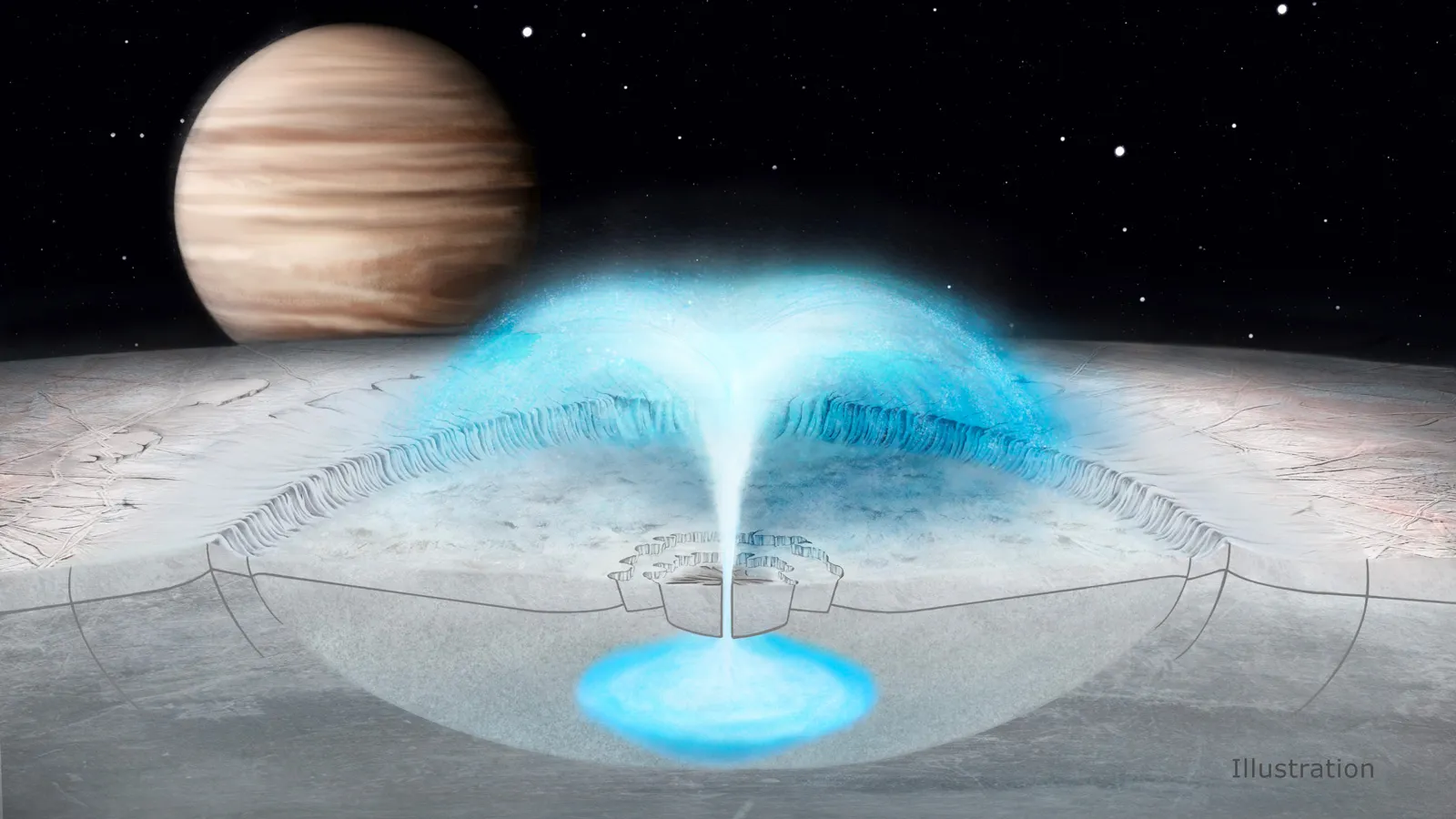The enduring quest for extraterrestrial life often leads us to distant exoplanets. However, some of the most promising clues for alien life might lie much closer to home: within our own solar system. Recent, compelling evidence from NASA has significantly bolstered the case for habitability on Jupiter’s moon, Europa. New analyses of observations from the Hubble Space Telescope confirm the recurring presence of Europa water plumes, erupting from beneath its icy shell. This extraordinary discovery reshapes our understanding of Europa and intensifies the excitement surrounding the potential for life beyond Earth.
Unveiling the Enigmatic Europa Water Plumes
For years, scientists have suspected the existence of vast subsurface oceans on Europa. These oceans are thought to be warmed by tidal forces from Jupiter. They could potentially harbor the necessary ingredients for life. Earlier observations hinted at water vapor plumes, but the evidence was often fleeting or ambiguous. However, recent, refined analysis of Hubble data, combined with very latest insights, provides a clearer picture. These new findings indicate that water vapor plumes are not isolated events. Instead, they appear to be a recurring phenomenon.
These powerful geysers are thought to originate from Europa’s global ocean. They burst through cracks in its thick, icy crust. Detecting these plumes is a game-changer. Why? Because it offers a tantalizing possibility. Future missions might directly sample this subsurface ocean. They could do so without needing to drill through kilometers of ice. This dramatically simplifies the search for biosignatures, or signs of life.
Why Europa’s Ocean and Plumes Matter for Life
The discovery of Europa water plumes is incredibly significant for astrobiology. Europa’s ocean is believed to contain more water than all of Earth’s oceans combined. Furthermore, interactions between the water and the moon’s rocky core could provide chemical energy. This energy could potentially fuel microbial life, similar to hydrothermal vents on Earth’s ocean floor. The confirmed presence of plumes means this potentially habitable environment is, in a sense, reaching out to us.
Scientists are now studying the composition of these plumes. They hope to understand what chemicals and organic molecules might be present. The very existence of these eruptions suggests an active, dynamic internal environment. Such conditions are often seen as favorable for the emergence and sustenance of life. This makes Europa one of the most compelling targets in our search for alien life within the solar system.
The Future of Exploration: Missions to Witness Europa Water Plumes
This latest confirmation of Europa water plumes has profound implications for upcoming space missions. NASA’s Europa Clipper mission is a dedicated orbiter. It is designed to conduct detailed surveys of Europa. The mission aims to investigate whether the moon has the potential for life. Europa Clipper is set to launch in October 2024 and arrive at Jupiter in 2030. Its instruments are specifically designed to fly through plumes. It can collect samples of ocean material if they are present during its flybys. This could provide direct evidence of Europa’s habitability, or even life itself.
Similarly, ESA’s Jupiter Icy Moons Explorer (JUICE) mission also plays a crucial role. Launched in April 2023 and arriving in 2031, JUICE will perform multiple flybys of Europa. It aims to characterize Europa’s ocean. It will also study its icy shell, further complementing Clipper’s work. These ambitious missions represent humanity’s boldest attempts to answer one of life’s most profound questions: Are we alone?
A New Chapter in the Search for Extraterrestrial Life
The confirmation of Europa water plumes marks a thrilling new chapter in the search for extraterrestrial life. This breakthrough transforms Europa from a merely intriguing icy world into a prime candidate for hosting living organisms. It invigorates future space exploration. It also inspires awe about the vast possibilities within our own cosmic neighborhood. Each new piece of evidence brings us closer to understanding the conditions necessary for life. It further fuels the ongoing scientific endeavor to explore the ultimate frontier.
For more news and updates, please visit PFM Today.













